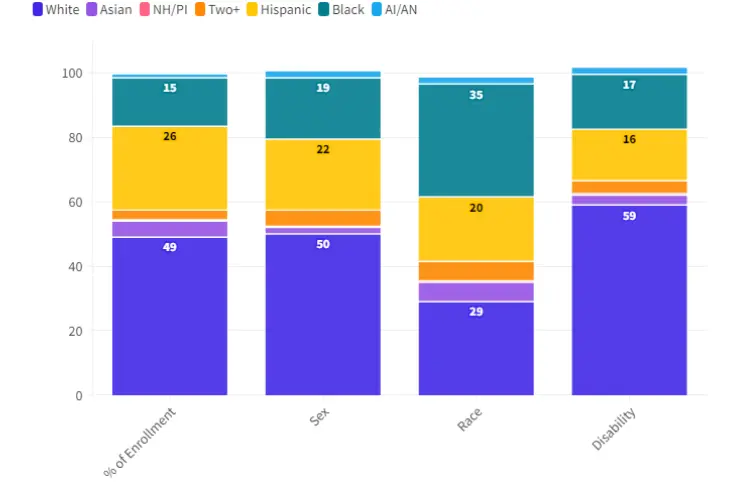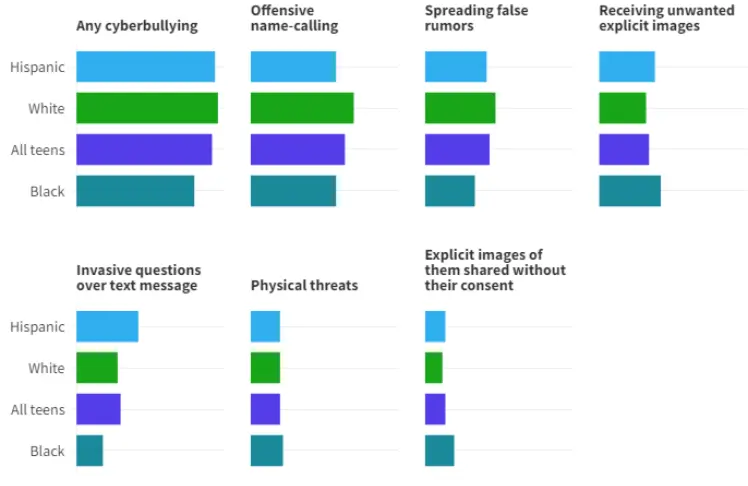
This article is one of a series of articles produced by Word in Black through support provided by the Chan Zuckerberg Initiative. Word In Black is a collaborative of 10 Black-owned media outlets across the country.
Breana Calloway stood in front of the Illinois State Senate in March to testify in favor of the Racism Free Schools Act.
It passed the Senate unanimously, passed through the House, and was signed into law in August.
Calloway, a principal-in-training in Chicago and a former Teach Plus Fellow, worked with her cohort to pass the act, which she says “puts something on the books to protect staff and students from racial harassment.”
The goal was to distinguish racial harassment from bullying, because bullying is something that persists, whereas racial harassment can happen once and still cause the same amount of harm. And it aims to provide training for teachers, because so many “are not prepared to deal with it,” Calloway says.
Growing up in predominantly white spaces, this was personal to Calloway. She wanted to make sure that not only was her story being told, but so were the stories of thousands of students who experience this daily.
Now they’re figuring out how to implement it, hold people accountable, and even take it national.
“This is something we want to expand upon,” Calloway says. “This is something that is super monumental for us here in Illinois, and we’re definitely looking forward to expanding.”
Racist Bullying Isn’t Going Anywhere
Bullying isn’t going away. If anything, it’s evolving and becoming more targeted, says Tyler Cook, a second-year eighth-grade math teacher in Philadelphia.
“Bullying has become much more intersecting,” he says. “As we’ve adopted more inclusive language and different ways of recognizing the intersections in the world, that also has created more room for violence and harm.”
Cook, a Black and queer educator, is open with his students about how he identifies. Fed up with the offensive vernacular he’s heard students use, Cook leads Safe Zone workshops, teaching his students how to address different identities, and be open and mindful of others’ identities.
Race-based bullying made up nearly a quarter of all bullying.

But it only sticks situationally. Even though Cook knows his students respect him, he’s found they are no longer thinking about his identity when they leave his classroom. He’s overheard students say, “This person is a f*****, but I’m not talking about Mr. Cook.”
Cook wants students to understand that there aren’t exceptions to derogatory terms.
“You’re talking about a community that I am accepted into, a community that I feel a part of,” Cook says. “When you say that to one person, you’re saying that to all.”
Despite making up only 15% of the public school population, Black students were 35% of those who reported being bullied because of their race, according to a 2018 report by the U.S. Department of Education’s Civil Rights Data Collection. Race-based bullying accounted for nearly a quarter of all bullying reported in the analysis, and it was the top reason Black students were bullied.
Race-based bullying was the top type reported by Black students.

Cyberbullying is also a huge problem among teens, with 46% of teens ages 13-17 reporting any type of cyberbullying, according to a 2022 Pew Research Center report. Black students, at 40%, were the least likely to report cyberbullying, and 29% said they experienced offensive name-calling.
However, data from Boston University’s Wheelock College of Education & Human Development shows that searches for both school bullying and cyberbullying dropped between 30% to 40% during virtual learning in spring 2020. The drop continued through the fall and winter of the 2020-2021 school year, but increased back to pre-pandemic levels, and students returned to in-person schooling.
Black students were the least likely to report experiencing any cyberbullying

Part of the problem, Cook says, is that the education system “is not quite all the way there” to support educators, students, and families as they navigate these new spaces.
“I don’t see bullying going away anytime soon,” Cook says. “The moral code is played out. We need to update it just like we need to update our laws, our policies.”
The Burden Falls on Black Teachers
Neither Cook nor Calloway, who spent seven years as a teacher in Chicago, recall any specific training on handling racial harassment or racist bullying.
And yet the responsibility of navigating racial harassment and racist bullying incidents are often assigned to Black teachers.
“It’s given to you to figure it out,” Calloway says.
But it’s not just the students. It also comes from the teachers, Calloway says. As a Black teacher, Calloway explains, the environment can become hostile when you try to speak up.
“The burnout, for me, I experienced because I’m constantly speaking out for Black children, their experiences, trying to make it better. And I’m not shielded from that,” Calloway says. “So I’m shielding myself from these experiences, from an administration and other teachers, but also trying to shield the students from that, as well.”
Progressive Movements Don’t Help the Cause
While the Black Lives Matter Movement dominated the news cycle and Gen Z is talked about as being a progressive generation, neither have done much to help eliminate racial harassment or racist bullying.
Instead, Cook thinks the movement unintentionally contributed to racism in the classroom. He says focusing attention on any specific identity, social group, or type of oppression definitely brings in allies and advocates, but it also amplifies the voices of the opposition, who say, “I don’t believe in this thing, and I don’t accept it.”
“How do you level out ‘we are trying to open these young minds, and we’re trying to adopt this new transformative way of thinking,’” Cook says, “but we still have generations of people who are in these positions of power, who haven’t adopted their mindset?”
Racist bullying or racial harassment are an everyday thing for many students.
If anything, the bullying gets more discreet and becomes more of a microaggression, Calloway says. Racism doesn’t go away because we say it doesn’t exist, she says.
“A lot of times, when people say that, you’re minimizing the everyday experiences of Black and brown children, specifically in schools that are already harmful to them because they have different ways of teaching,” Calloway says. “If racism was going away, we wouldn’t need something like the Racism Free Schools Act to protect students from racial harassment and racial bullying.”




